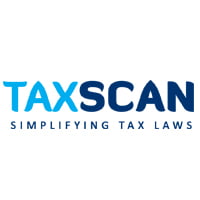Income Tax Calculation Mistake u/s 115BBE of Income Tax Act can be Rectified only via Section 154, not Section 263: ITAT [Read Order]
It was determined that any error in the AO’s order could have been corrected under Section 154 (rectification of mistakes) rather than invoking Section 263
![Income Tax Calculation Mistake u/s 115BBE of Income Tax Act can be Rectified only via Section 154, not Section 263: ITAT [Read Order] Income Tax Calculation Mistake u/s 115BBE of Income Tax Act can be Rectified only via Section 154, not Section 263: ITAT [Read Order]](https://www.taxscan.in/wp-content/uploads/2024/08/Income-Tax-Income-Tax-Income-and-Tax-Calculator-Income-Tax-Calculation-Mistake-TAXSCAN.jpeg)
The Income Tax Appellate Tribunal ( ITAT ) of Ahmedabad recently in a case held that the Income Tax calculation mistake made by the Assessing Officer ( AO ) under section 115BBE of the Income Tax Act 1961 ( ITA ) can only be rectified through section 154 of ITA, and thus the Principal Commissioner of Income Tax ( PCIT ) invoking section 263 for the said rectification was invalid.
The assessee/appellant, Dasrathsinh Ghanshyamsinh Chudasama, filed his income tax return on October 19, 2015, declaring a total income of Rs. 31,52,060.The return was processed under Section 143(1) and subsequently selected for limited scrutiny.
Get a Copy of Income Tax Rules, Click here
The AO passed an order on November 27, 2007, making several additions to the assessee’s income, including Rs. 3,60,000 as interest-free advance, Rs. 34,00,000 as cash gifts, Rs. 19,50,000 as an unsecured loan and Rs. 1,63,49,423 as cash deposits in the bank. The total income was assessed at Rs. 1,89,07,363.
The PCIT issued a show cause notice under Section 263 on February 28, 2020, challenging the AO's assessment.
Section 263 of ITA pertains to the powers of the Commissioner of Income Tax to revise any order passed by an AO if it is deemed erroneous and prejudicial to the interests of the revenue.
This section allows the Commissioner to revise the order if there is a failure to apply the correct legal principles, or if there is an incorrect assumption of facts, leading to an erroneous decision. The Commissioner can issue a notice to the concerned person and revise the order accordingly.
The notice pointed out that the assessee had failed to provide documentary evidence for the cash deposits and cash gifts, and thus, these should have been taxed at a higher rate of 30% under Section 115BBE of ITA and not as per the slab rates.
The PCIT believed that the AO’s failure to tax the income under Section 115BBE made the assessment order erroneous and prejudicial to the Revenue's interests. Aggrieved, the assessee appealed against this before the ITAT.
Get a Copy of Income Tax Rules, Click here
The assessee, represented by counsel Dhrunal Bhatt, contested the PCIT’s order arguing that the AO had already made a detailed inquiry and that the PCIT’s notice was vague and procedurally incorrect.
It was submitted that the show cause notice of the PCIT issued under Section 263 did not categorically conclude that the Assessment Order is erroneous and prejudicial and hence the same should be quashed.
The assessee also argued that the assessment order had already merged with the appellate authority's order, thereby limiting the PCIT’s jurisdiction under Section 263.
The two member bench comprising Ms. Suchitra Kamble and Mr Narendra Prasad Sinha, after hearing the arguments, observed that the PCIT had failed to provide clear and specific findings that the AO's order was erroneous and prejudicial to the Revenue.
It was determined that any error in the AO’s order could have been corrected under Section 154 (rectification of mistakes) rather than invoking Section 263.
In light of this key observation,the bench concluded that the PCIT’s invocation of Section 263 was unjustifiable and invalid. Accordingly, the assessee’s appeal was allowed.
To Read the full text of the Order CLICK HERE
Support our journalism by subscribing to Taxscan premium. Follow us on Telegram for quick updates
Dasrathsinh Ghanshyamsinh Chudasama vs Principal Commissioner of Income Tax , 2024 TAXSCAN (ITAT) 916 , Dhrunal Bhatt , Durga Dutt

